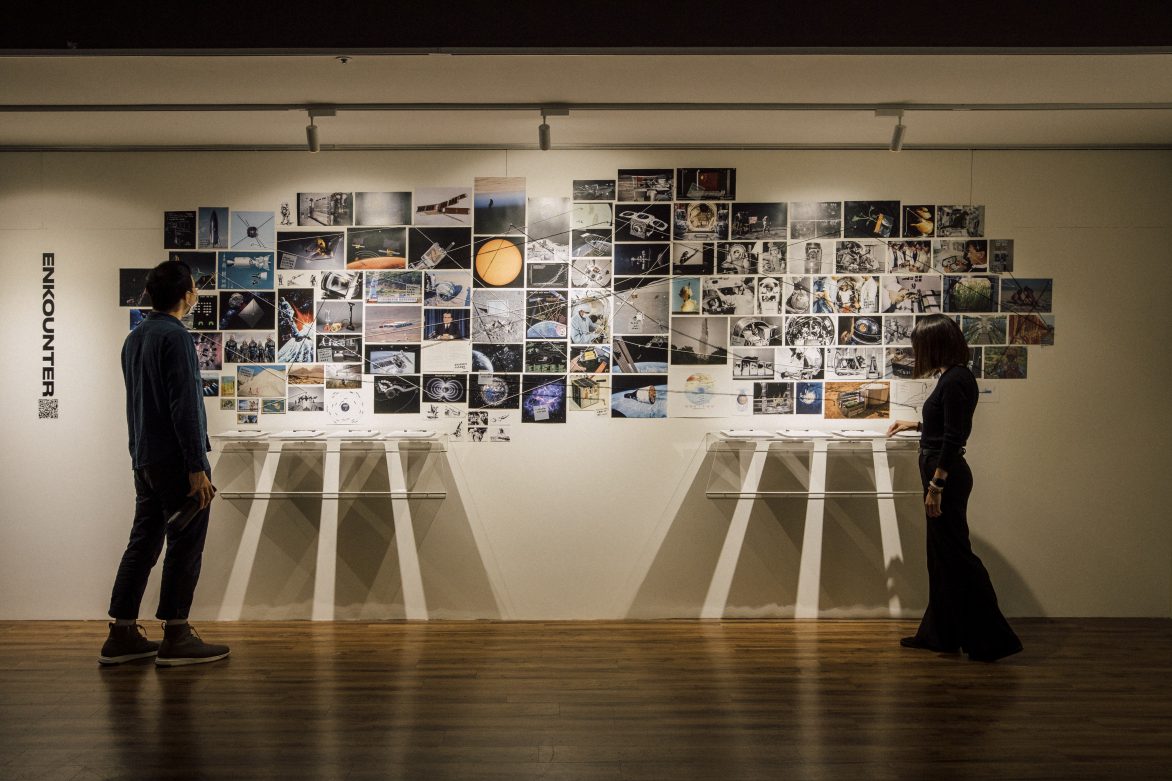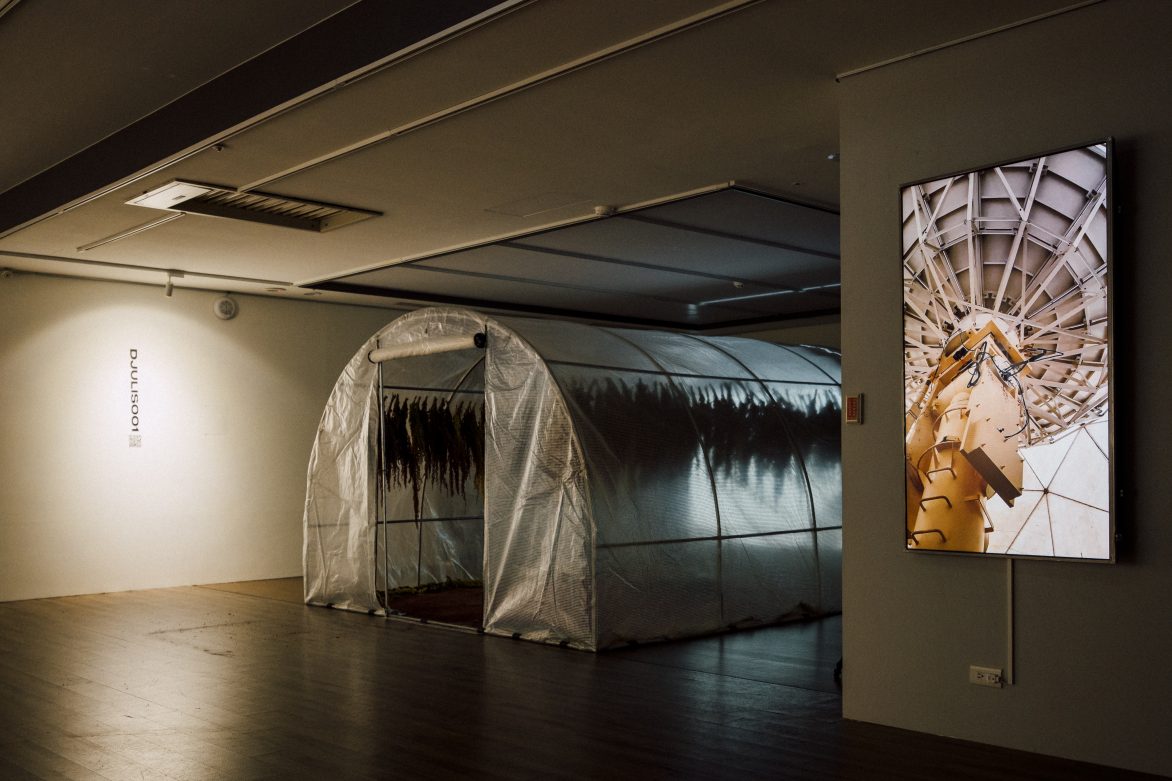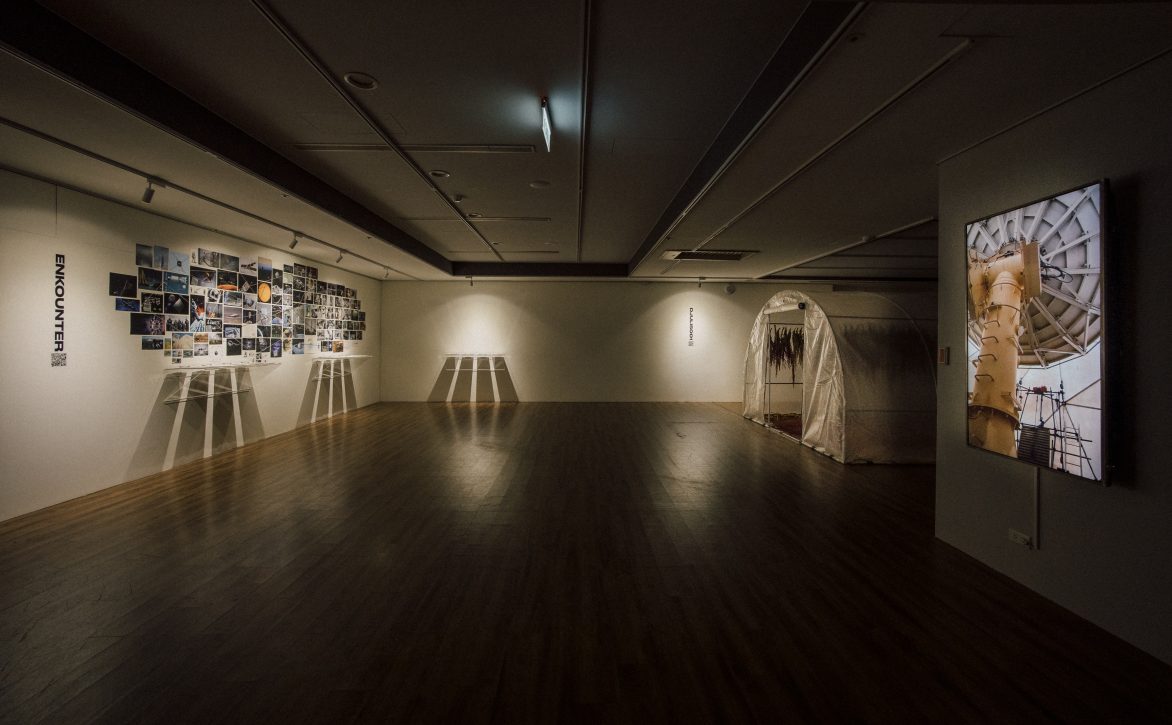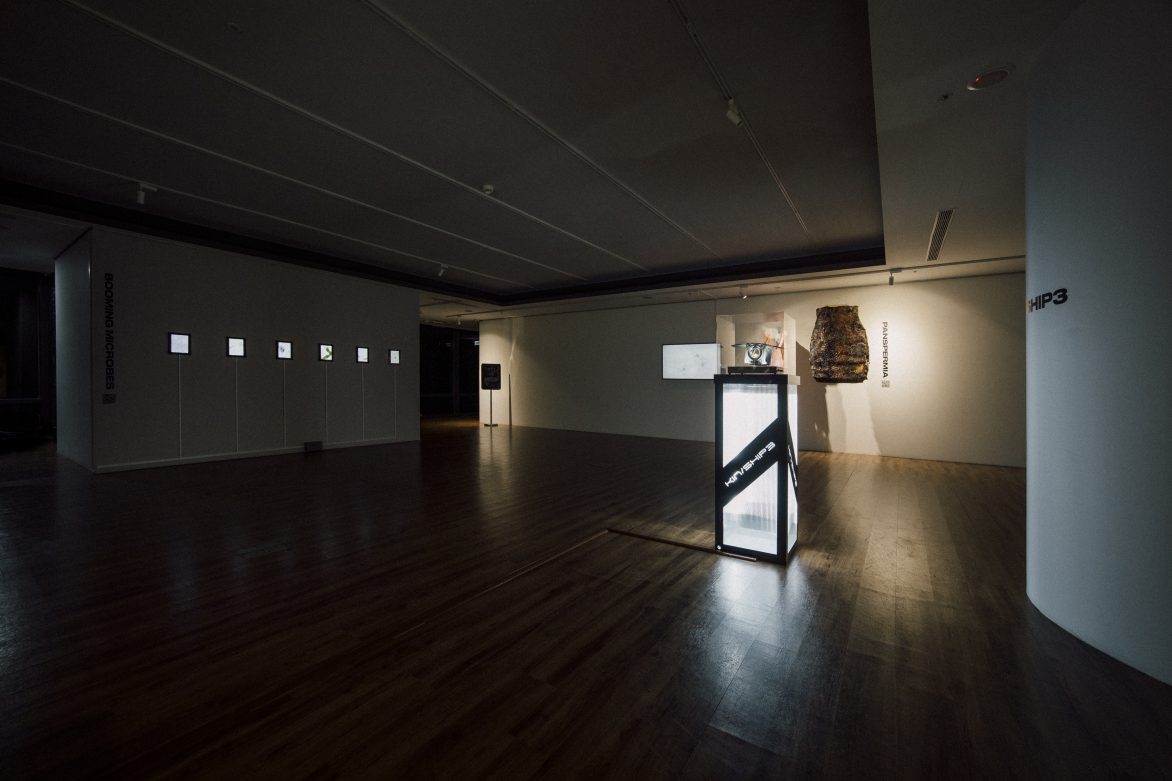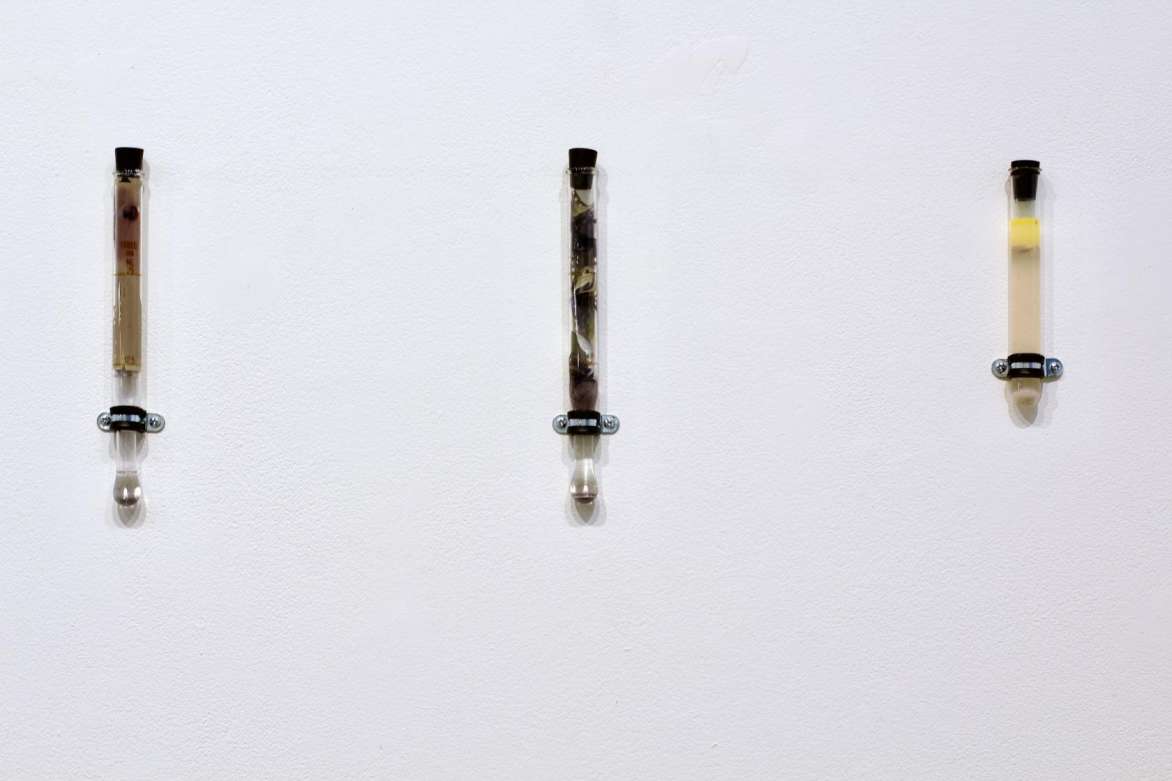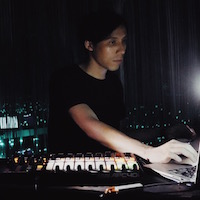January 14 – February 28, 2022
New Taipei Gallery
Featuring the work of Po-Hao Chi (SMACT ’21), Rae Yuping Hsu (SMACT ’20), and Nancy Dayanne Valladares (SMACT ’20)
3000 Years Among Microbes speculates on an alternative space future through rapidly evolving technologies from the microbial to the planetary scale, with the logic of “symbiosis” and “kinship.” The project’s title comes from an unpublished manuscript written by Mark Twain in 1905. The story is about a microbiologist who was mistakenly turned into a bacteria by a magician, looking at the world from the perspective of a bacterium that retained its human memory.
Inspired by this story, the team took a microbial perspective and created a fictional character of extremophile bacteria that inhabits Mars. One day, parts repairmen in a space center boarded a “space colonization” rocket and stowed away from the post-climate Earth to Mars. After landing, they ran in the opposite direction of the space city, left the jurisdiction, and found a foothold, where they met the protagonist of the story. During the “contact,” a process that could not be described in words, the extremophile recognized ancestor bacteria belonging to the same species in the microbiome of the girl’s intestines. This first contact is different than previous ones, portraying a cosmic view of interdependence on a challenging scale to observe with the naked eye. How do these two life forms embrace or hurt each other in the reunion story between the Mars indigenous and the “human” ancestor bacteria? What kind of training would astronauts with this cosmology receive, and how would they live in symbiosis with other species? We must remember that symbiosis is not a peaceful transaction, and survival inevitably involves discussion, conflict, and collaboration.
Drawing on science fiction literature, emerging technologies, and post-human perspectives, the project opens up a series of discussions on framing space exploration outside the metaphor of colonization through prototyping, experimental videos, space simulations, online platforms, and stakeholder interviews. In the process of project development, Zone Sound Creative studio and artists visited Taiwan National Space Organization and a NASA lunar mock-up base in the Western Desert during the 1960s space race, filmed on locations, and collected microbial samples. Juxtaposing extreme landscapes with microscopic images blurs the distinction between humans and microbes and further replaces the definition of the human “individual” with the concept of “holobiont.”
Donna Haraway, the American postmodernist scholar who proposed A Cyborg Manifesto, argues that the construction of “kinship” is not limited to blood relatives and humans but that many nonhuman entities will also be involved. “3,000 Years Among Microbes” is a test of imagination that considers how humans should approach space exploration (colonization), remembering the lessons of the Anthropocene and embedding the concept of symbiosis in the vision of interstellar ecosystems. Because space exploration is highly relevant to the arms race, geopolitics, and economic interests, we hope to propose a new language when “space age” is no longer a fantasy, a language distinguished from the metaphor of colonization, as commercialization turns the universe into a “new frontier” waiting for exploration. From climate change to the wealth gap, we have seen how difficult it is to solve these human-generated problems. In space, we have the opportunity to make better choices right from the start.

